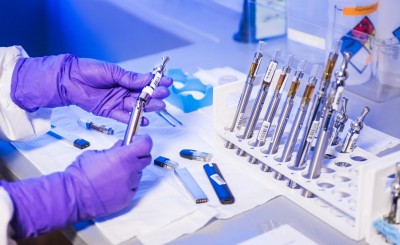Tech
Scientists Use Atomic Clocks as Quantum Simulators
Catherine Griffin
First Posted: Aug 13, 2013 01:47 PM EDT
First Posted: Aug 13, 2013 01:47 PM EDT
Atomic clocks can be used for a variety of applications. Now, scientists have used one of these devices as a quantum simulator, mimicking the behavior of a different, more complex quantum system. The findings have implications for future models and experiments.
The experiment itself was performed with an atomic clock made of about 2,000 neutral strontium atoms trapped in intersecting laser beams. The clock atoms themselves were arranged like a stack of 100 pancakes, each containing about 20 atoms. Normally, the atoms react individually to red laser pulses, switching between the two energy levels. Yet the scientists discovered that the atoms can also interact with each other, first in pairs and eventually all together. In fact, the researchers were surprised to find that under certain conditions, the clock atoms interact like atoms in magnetic materials.
"This was completely unexpected," said Jun Ye, one of the researchers, in a news release. "We were not looking for this at all, we were just naively trying to understand the particle interactions as part of our effort to further improve the clock. We were pleasantly surprised to find we can now use a clock as a powerful quantum apparatus to study magnetic spin interactions."
For small numbers of particles, about 30 atoms, the clock atom interactions obey mathematical formulas similar to those describing the behavior of electrons in magnetic materials. But if more atoms are included, classical calculations would not keep up with the experimental results.
So what does this mean for the future? Scientists could potentially use atomic clocks for modeling and perhaps explaining the quantum mechanical behavior of exotic materials such as high-temperature superconductors. These superconductors can conduct electricity without resistance. Because all but the smallest, most trivial quantum systems are too complicated to simulate on classical computers, these quantum simulators are important for better understanding these systems.
Currently, the scientists hope to perform more complicated simulations. In addition, they wish to continue to develop a theory to explain the findings that they discovered.
The findings are published in the journal Science.
See Now: NASA's Juno Spacecraft's Rendezvous With Jupiter's Mammoth Cyclone




